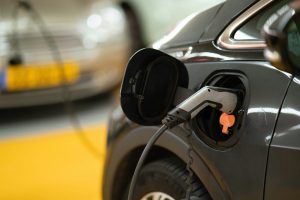The Ultimate Guide to Understanding Transportation’s Technological Future
The transportation industry is constantly evolving, with new technologies emerging that have the potential to significantly impact the way we travel. From self-driving cars and electric vehicles to hyperloop and flying taxis, the possibilities seem endless. As we move towards a more interconnected world, it is essential to understand the role of technology in shaping the future of transportation. In this ultimate guide, we will explore the latest advancements in transportation and how they are transforming the way we move from one place to another.
The Rise of Electric Vehicles
Electric vehicles (EVs) have gained widespread popularity in recent years due to their eco-friendliness and cost-effectiveness. These vehicles use electricity as their primary source of energy, eliminating the need for traditional fuels such as gasoline and diesel. With the increasing focus on reducing carbon emissions and protecting the environment, EVs are seen as a crucial step towards achieving a sustainable future for transportation.
Advancements in Battery Technology
One of the key factors contributing to the popularity of EVs is the continuous development of battery technology. In the past, limited battery life was a major drawback for electric vehicles, but with the advent of lithium-ion batteries, this is no longer a significant issue. These batteries are more efficient, have a longer lifespan, and can now power a vehicle for several hundred miles on a single charge.
Moreover, advancements in battery technology have also made it possible to charge EVs at a faster rate. With the introduction of fast-charging stations, it now takes less than an hour to charge an EV battery to 80% capacity. This has greatly reduced the time needed for recharging, making electric vehicles a more convenient option for long-distance travel.
The Challenges of Mass Adoption
Despite the numerous benefits of electric vehicles, the mass adoption of these vehicles is still facing some challenges. One of the main difficulties is the high cost of EVs. While the operating costs of these vehicles are lower, the initial purchase price is still a deterrent for many consumers. However, as technology continues to evolve, it is expected that the cost of EVs will decrease, making them more affordable for the average consumer.
Moreover, the lack of widespread charging infrastructure is another barrier to the mass adoption of EVs. To encourage more people to make the switch to electric vehicles, the government and private sector need to invest in the development of a robust charging network. This will not only make it easier for EV owners to recharge their vehicles but also alleviate range anxiety for potential buyers.
The Promise of Self-Driving Cars
Self-driving cars have been a topic of much debate and speculation in recent years. The idea of cars being able to navigate roads and highways without human intervention seemed like a distant dream, but with advancements in artificial intelligence and sensors, it is now becoming a reality.
Enhanced Safety
The primary goal of self-driving cars is to reduce the number of accidents caused by human error on the roads. With sensors and cameras that can scan the environment and react in milliseconds, self-driving cars have the potential to be much safer than their human-operated counterparts. By removing human error from the equation, self-driving cars can significantly decrease the number of accidents and fatalities on the roads.
The Impact on Employment
While the idea of self-driving cars is exciting, it also brings up concerns about the future of jobs in the transportation industry. With the potential for fully autonomous vehicles to take over long-haul trucking and taxi services, the number of jobs may decrease in these sectors. However, the increased demand for software engineers, data analysts, and other related professionals may offset this loss.
Transforming Urban Mobility with Hyperloop and Flying Taxis
Beyond electric and self-driving vehicles, there are also revolutionary concepts being developed that have the potential to completely transform the way we travel in urban environments. Hyperloop, a high-speed transportation system that uses vacuum-sealed tubes to transport passengers at speeds of up to 700 miles per hour, is one such concept. The idea is to create a network of hyperloop pods that can transport passengers and cargo between major cities, vastly reducing travel time and alleviating congestion on roads and highways.
Another futuristic mode of transportation is flying taxis, which could enable people to avoid traffic and travel more efficiently within cities. With companies like Uber and Boeing investing in this technology, the concept of flying taxis is no longer limited to science fiction.
The Future is Connected and Integrated
One of the most significant changes we can expect in the transportation industry is the integration of various technologies to create a seamless travel experience. Connected vehicles, where cars can communicate with one another and with the surrounding infrastructure, are already being tested. This will not only improve safety but also reduce traffic congestion, making our roads more efficient.
Moreover, as different modes of transportation become more interconnected, it will be easier for people to combine various means of travel to reach their destination. This could involve using a combination of a self-driving car, a hyperloop pod, and a flying taxi, all seamlessly linked through a single platform.
Conclusion
The transportation industry is on the cusp of a technological revolution, and the future looks incredibly promising. With electric vehicles, self-driving cars, hyperloop, and flying taxis, we are witnessing some of the most innovative developments in transportation history. As we continue to embrace and incorporate these technologies, it will not only transform the way we travel but also pave the way towards a more sustainable and interconnected world.










